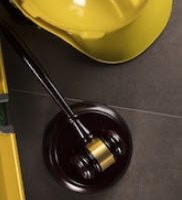The Law Governing Latent Construction Defects

Defects in construction are usually seen and discoverable by the owner who has received the deliverable. These defects are clear to the naked eye or they are discoverable after some technical investigation. As such, the statute of limitations begins to run when the defect is discovered for the purposes of making a claim. However, a more complex legal issue in the realm of construction defects is the issue of the latent defect. Latent defects are defects that are not readily discoverable. As a result, the statute of limitations cannot run until the defect has been discovered. How can claimants seek legal redress for latent defects?
Latent Construction Defects
A latent defect is a hidden flaw, weakness, or imperfection that cannot be discovered even with reasonable inspection. An example of a hidden defect in real property may refer to a defect in the title to the land. This is a situation where the owner believes that he or she holds good title to land, which permits the building of a structure. Another example of a hidden defect may arise when the paint used on a building is discovered to be unsustainable, but such is discovered only when the paint interacts with a naturally occurring chemical. A common defect is an inadequate foundation that causes a building to subside. Because latent defects are, by definition, not easily discernible, the statute of limitations does not apply here in the traditional sense.
Legal Considerations of Latent Defects
There are specific legal considerations that are triggered by the concept of latent defects. Firstly, as discussed above, the running of the statute of limitations is affected by the latent defect. Traditionally, a statute of limitations begins to run from the date of when the defect occurs. However, in the case of latent defects, the statute of limitation will stall unless and until the defect is discovered. This concept is called the “discovery rule.” As a matter of public policy, the rule seeks to protect parties who are at a disadvantage by the sheer fact that the defect cannot be discovered in the normal ways. These parties are given the opportunity to have their day in court.
Avoiding Latent Defects
On a practical level, it may be difficult to aspire to avoid all defects. Defects will occur, however, there are some steps parties can take to limit the latent ones. Parties should implement strict inspection standards to raise the chances that a latent defect will be discovered. Further, owners should make it a point to check for defects that are known to often manifest as a latent defects. Owners should place stipulations in their contracts that speak to latent defects as to alert the contractor about his or her obligations. If all else fails, the plaintiff can rest assured that if the defect constitutes a latent defect by a court, the statute of limitations will not run unless it is discovered. Even still, owners should be diligent in their inspections of the deliverable when it is presented by a contractor.
Contact an Attorney Today for Help
Fort Lauderdale construction attorney Brendan Sweeney has a wide-range of experience in complex construction litigation. We are well versed in litigation strategies and will guide you with knowledge and skill. Contact us now for a consultation.
Resource:
law.cornell.edu/wex/statute_of_limitations

